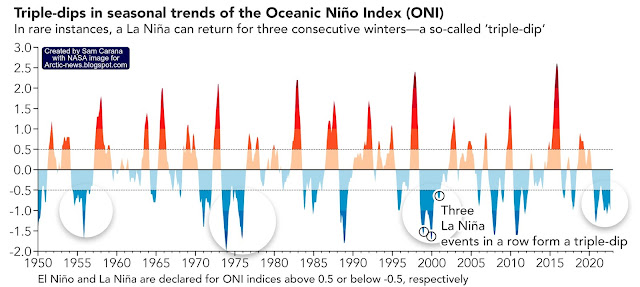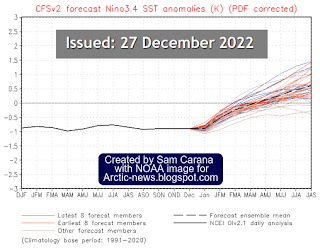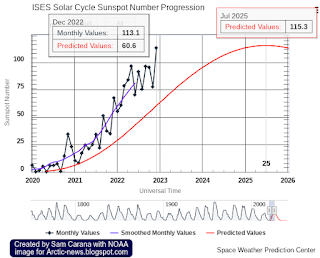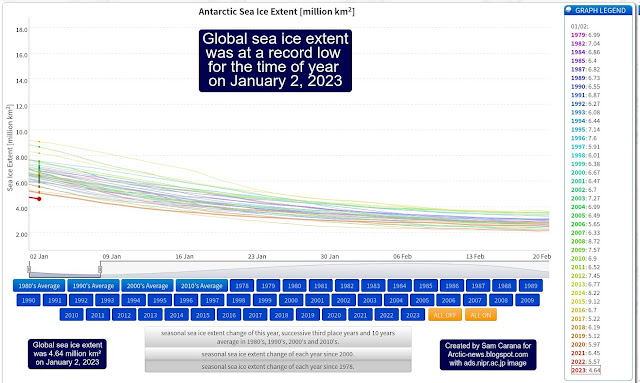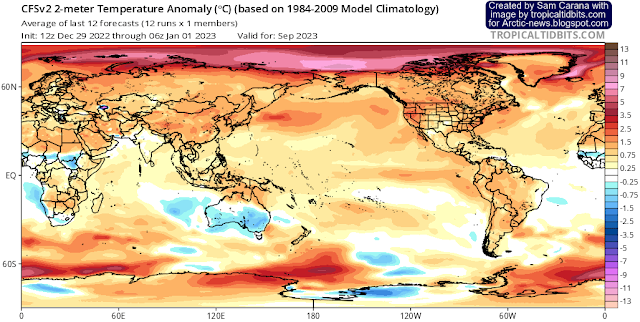A huge temperature rise threatens to unfold soon
 |
| [ image adapted from NOAA, from earlier post ] |
The upcoming El Niño looks set to coincide with a high number of sunspots. The number of sunspots is forecast to reach a peak in July 2025 and recent numbers are higher than expected, as illustrated by the image on the right, from NOAA.
In conclusion, the joint impact of a strong El Niño and high sunspots could make a difference of more than 0.65°C. This rise could trigger further developments and feedbacks that altogether could cause a temperature to rise from pre-industrial of as much as 18.44°C by 2026.
Further developments and feedbacks
There are many further developments and feedbacks that could additionally speed up the temperature rise, such as the (currently accelerating) rise of greenhouse gas emissions, falling away of the aerosol masking effect, more biomass being burned for energy and an increase in forest and waste fires.
As said, these developments and feedbacks could jointly cause a temperature rise from pre-industrial of as much as 18.44°C by 2026, as discussed at the Extinction page. Keep in mind that humans are likely to go extinct with a rise of 3°C, as illustrated by the image below, from an analysis discussed in an earlier post.
The situation is dire and threatens to turn catastrophic soon. The right thing to do now is to help avoid or delay the worst from happening, through action as described in the Climate Plan.
Links
• NASA – La Niña Times Three
• NOAA Climate Prediction Center – ENSO: Recent Evolution, Current Status and Predictions
https://arctic-news.blogspot.com/p/sunspots.html
• Cataclysmic Alignment
https://arctic-news.blogspot.com/2022/06/cataclysmic-alignment.html
• NOAA National Centers for Environmental Information, State of the Climate: Monthly Global Climate Report for October 2022, retrieved November 16, 2022
https://www.ncei.noaa.gov/access/monitoring/monthly-report/global/2022010/supplemental/page-4
• Tropicaltidbits.comhttps://www.tropicaltidbits.com
• Cold freshwater lid on North Atlantic
https://arctic-news.blogspot.com/p/pre-industrial.html
• Invisible ship tracks show large cloud sensitivity to aerosol – by Peter Manhausen et al.
https://www.nature.com/articles/s41586-022-05122-0
• Extinction
https://arctic-news.blogspot.com/p/extinction.html
• When will we die?
https://arctic-news.blogspot.com/2019/06/when-will-we-die.html
• Climate Plan
https://arctic-news.blogspot.com/p/climateplan.html

